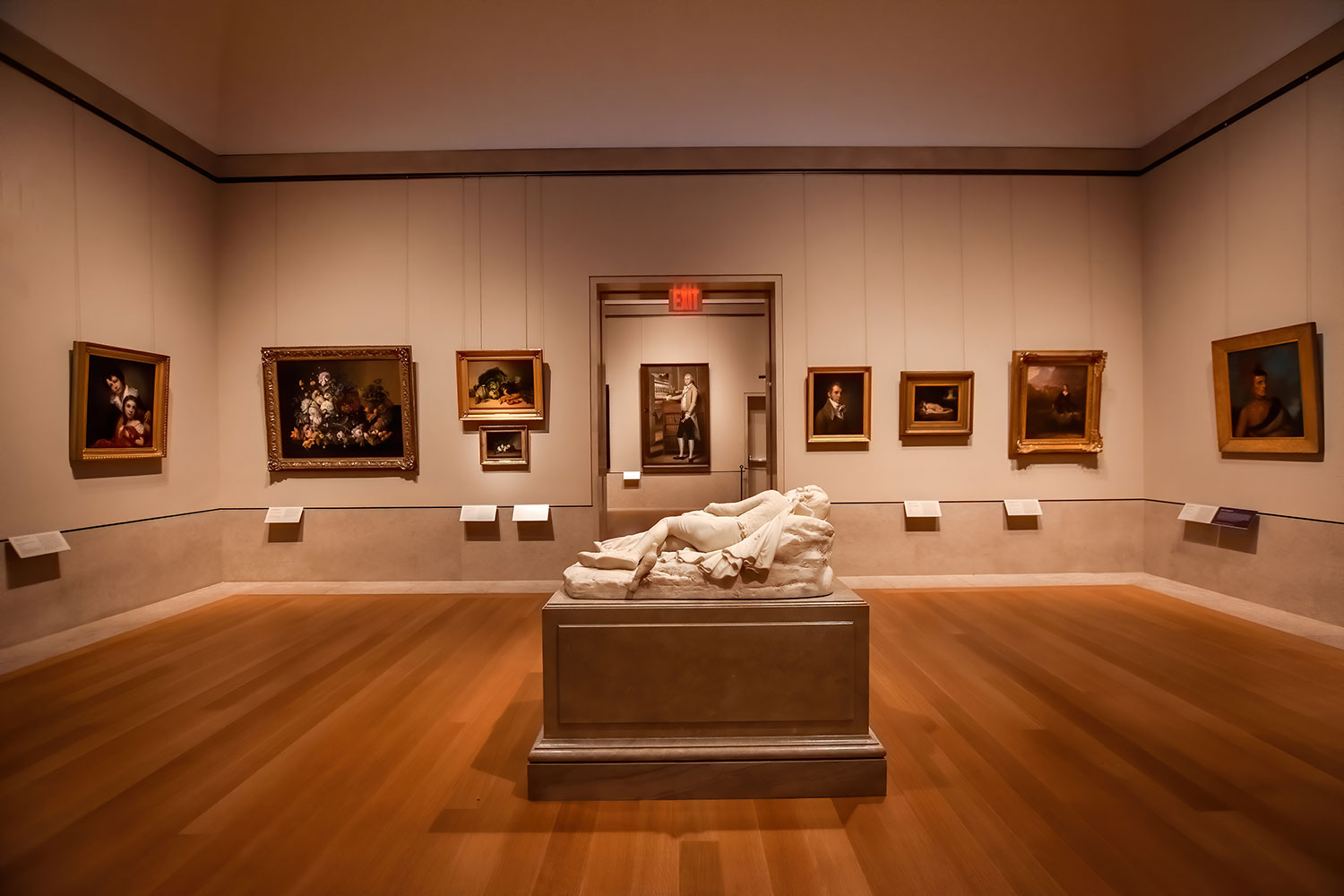Table of contents
- The history of the Metropolitan Museum of Art in New York
- A historic building to house the MET
- An ever-expanding art collection
- From antiquity to contemporary art, the MET’s art collection
- Masterpieces on display at the Metropolitan Museum of Art
- Why visit the Metropolitan Museum of Art?
- Tips for organizing your visit of the MET NYC
In the heart of Manhattan stands the Metropolitan Museum of Art (The Met), one of the largest museums in the world. This institution presents a remarkable collection of over 250,000 works of art. From antiquity to modern and contemporary art, the paintings, sculptures and other objects are spread out in sumptuous galleries.
During your stay in New York, a visit to this temple of art is a must. A visit to this temple of art is a must for both art lovers and laymen. Here is everything you need to know about this imposing American museum.

Photo : (c) Shutterstock
The history of the Metropolitan Museum of Art in New York
It was in Paris, in 1866, that lawyer John Jay and his comrades had the idea of creating an art institution in New York. They wanted a space that could showcase American culture, provide art education and thus match European museums. Eight years later, the Metropolitan Museum of Art opened to the public in 1872 on Fifth Avenue in lower Manhattan.
A historic building to house the MET
After several moves, the national art museum moved to the edge of Central Park in 1880, into the present building designed by Calvert Vaux and Jacob Wrey Mould. The neoclassical façade and the great hall were designed by architect Richard Morris in 1902. Over time, additions were made to the building, which now has an exhibition area of more than 280 rooms on about 600 square kilometers. It’s huge!
An ever-expanding art collection
The museum has never ceased to acquire important works, covering the entire history of art. A Roman sarcophagus was its first purchase. As early as 1871, European paintings entered the collection, including some by Nicolas Poussin. In 1889, paintings by Édouard Manet were added, followed by Auguste Renoir in 1907. The museum was the first public institution to purchase a work by Henri Matisse.
From antiquity to contemporary art, the MET’s art collection
Greek and Roman art, Islamic art, ancient Near Eastern art, African and Oceanic art are among the many departments of this art center. European painting and sculpture are represented, ranging from the 13th to the 20th century. An eclectic museum, one part is devoted to weapons and armor, another to musical instruments from all over the world. Also, from the English dresses dated 1760 to the creations of Vivienne Westwood or Issey Miyake, the history of fashion is traced by the exhibition of emblematic models.
The museum is particularly renowned for its collection of Egyptian art, but also for its American art (paintings, sculptures, decorative arts) which has an entire wing of the building at its disposal.
Masterpieces on display at the Metropolitan Museum of Art
Many great works are presented in this museum. Among them, you can contemplate the reconstruction of the temple of Dendur and the sphinx of Hatshepsut in the section devoted to ancient Egypt. The flintlock pistol of Louis XIII and a samurai armor of the 18th century belong to the collection of weapons and armors. A Stradivari violin, an Érard harpsichord and a 20th century African banjo are among the many musical instruments on display.
As for the paintings, The Death of Socrates by Jacques-Louis David, Aristotle Contemplating the Bust of Homer by Rembrandt, The Musicians by Caravaggio, The Fortune Teller by Georges de la Tour and The Iris by Vincent Van Gogh are among the masterpieces of European art. In modern art, you can see Pablo Picasso’s Woman in a Shirt in an Armchair, Joan Miró’s Constellation or Jasper Johns’ White Flag. Finally, the painting Washington crossing the Delaware by Emanuel Leutze commemorates an important event in American history.

Photo : (c) Shutterstock
Why visit the Metropolitan Museum of Art?
A mythical institution in the Big Apple, the MET presents such a variety of works that it would be surprising if any of them did not move you. Its collection is unique in the world. In addition, lectures and screenings are regularly held there. The architecture, with its famous exterior steps and imposing hall, is worth a visit. And if the exhibitions make you feel tired, try to visit the terrace. This one has an incredible view of the city.
Tips for organizing your visit of the MET NYC
It is illusory to think that you can see everything in this immense museum. Organize your visit according to your preferences. A map is available on site or on the official website. If you don’t want to spread yourself too thin, head straight for the area that interests you, while taking a quick look around. As with all museums, it is best to go in the morning to avoid the crowds. Go at your own pace, taking a few contemplative breaks. If you plan a visit with your children, don’t miss the particularly impressive collection of armor.
Some practical information to prepare your visit
Before any visit, remember to consult the official page of the Metropolitan Museum of Art in order to know the latest news. This site is very efficient and contains all the information you need for your visit.
Where is the MET located?
The Metropolitan Museum of Art is located in the Upper East Side, facing Central Park. It is located on Fifth Avenue, at number 1000.
How do I get to the MET?
The nearest subway stations are 86 St Lexington or 81 St – Museum of Natural History. The museum is about a ten minute walk here: The Met Fifth Avenue 1000 Fifth Avenue New York, NY 10028
What are the opening hours?
The MET is open every day except Wednesdays and holidays. It is open from 10 am to 5 pm. Late-night shows are offered on Fridays and Saturdays until 9pm.
How to buy your tickets?
Tickets can be purchased at the on-site ticket machines or directly online here. For travelers, tourist NYC passes include a visit to this museum in their package. Audioguides, in many languages, are available for a commented visit.
How much time should I allow for a visit?
It’s up to you to decide how much time to devote to this monument, depending on your interests. Generally, half a day is necessary.
